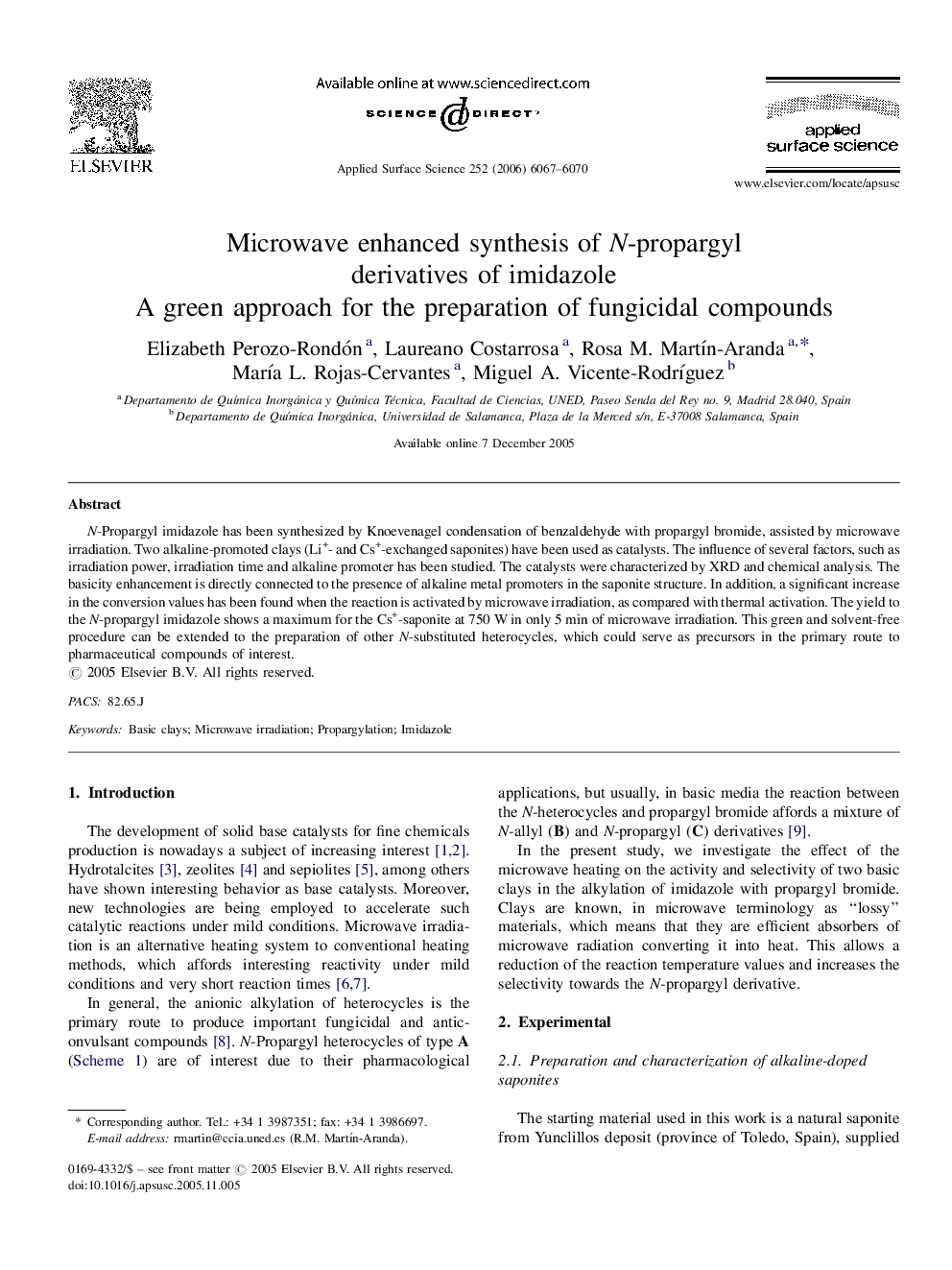| Article ID | Journal | Published Year | Pages | File Type |
|---|---|---|---|---|
| 5369015 | Applied Surface Science | 2006 | 4 Pages |
N-Propargyl imidazole has been synthesized by Knoevenagel condensation of benzaldehyde with propargyl bromide, assisted by microwave irradiation. Two alkaline-promoted clays (Li+- and Cs+-exchanged saponites) have been used as catalysts. The influence of several factors, such as irradiation power, irradiation time and alkaline promoter has been studied. The catalysts were characterized by XRD and chemical analysis. The basicity enhancement is directly connected to the presence of alkaline metal promoters in the saponite structure. In addition, a significant increase in the conversion values has been found when the reaction is activated by microwave irradiation, as compared with thermal activation. The yield to the N-propargyl imidazole shows a maximum for the Cs+-saponite at 750Â W in only 5Â min of microwave irradiation. This green and solvent-free procedure can be extended to the preparation of other N-substituted heterocycles, which could serve as precursors in the primary route to pharmaceutical compounds of interest.
